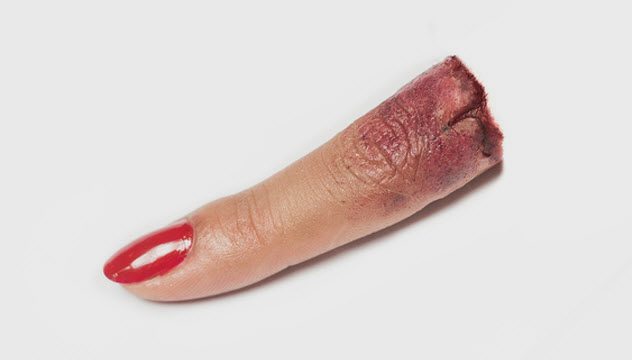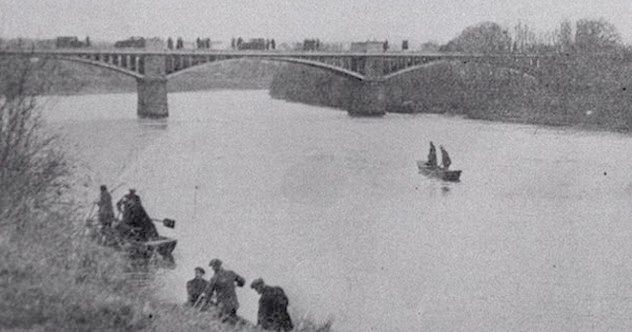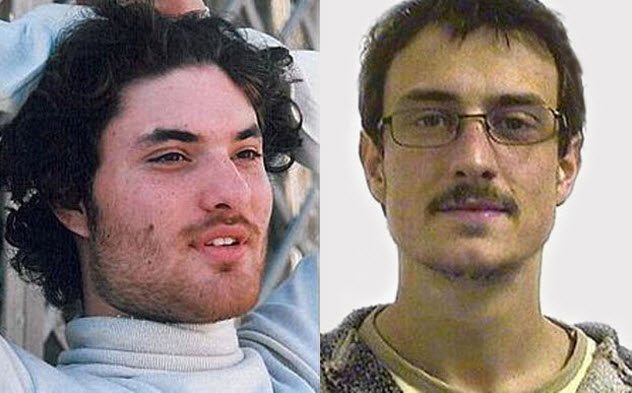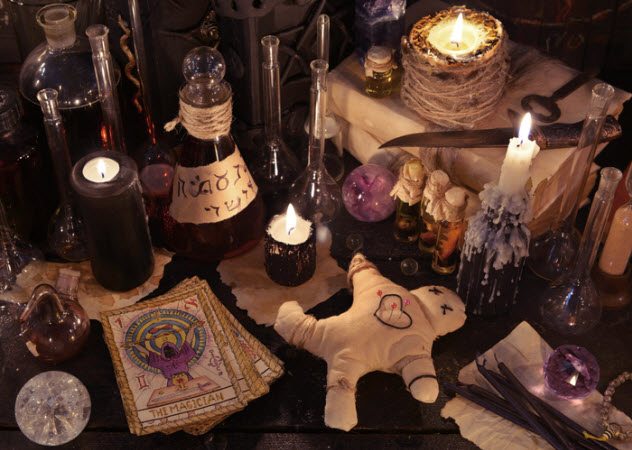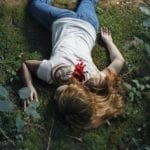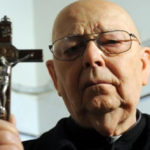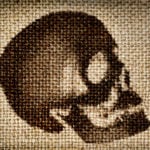While Scotland Yard has successfully solved thousands of cases since it was established in 1829, it has failed occasionally to bring suspected killers and other criminals to justice. The most notorious killer who got away is Jack the Ripper, but these 10 cases baffled Scotland Yard as well.
10 The Case Of The Stolen Gold
Following a massive theft of gold bullion and diamonds in November 1983, Scotland Yard admitted that it was baffled. Police hadn’t been able to identify “a single solid clue,” one officer said. Authorities feared that the 6,800 bars of gold, worth $40 million at the time, might have been melted to destroy their identifying marks and then taken out of the country. The sale of the stolen diamonds, worth $175,000, posed no problem for the thieves because the gems lacked such marks. The gold was being stored in the Brink’s-Mat Ltd. warehouse in Hounslow, adjacent to Heathrow, when six robbers stole it despite an array of alarms, searchlights, closed-circuit television cameras, and heavy automatic doors. Police suspected that the thieves used information supplied by someone planted in the Brink’s staff or by a Brink’s employee.[1] Six security guards on duty during the robbery saw three of the robbers. But they were unable to provide detailed descriptions of the suspects, who wore hoods, and nothing was known of the vehicles used by the gang. Although insurance companies offered $3 million for information concerning the stolen items, no one came forth with any tips. The investigation was impeded by the nation’s newspaper strike, which prevented authorities from appealing to the public for assistance.
9 The Case Of The Severed Finger
Unable to identify a man who lost a finger in 2010, Scotland Yard appealed to the public for information. A dog discovered the digit in an abandoned shop in Woburn Walk on December 4. No other remains were found in the vicinity. Initially, police thought the finger might have been blown from the victim’s body as a result of the July 7, 2005, terrorist bombings at Aldgate. Fifty-two people were killed in the London attacks that day. The shop in which the missing finger was found is near the location where suicide bomber Hasib Hussain detonated his bomb on a double-decker bus. Analysis of the DNA of Hussain’s victims and survivors proved that the finger did not belong to any of them or to any missing persons. When asking for the public’s help, Scotland Yard’s Detective Constable Tom Boon admitted the case was “quite the mystery.”[2]
8 The Case Of The Ring Of Bells Murder
In October 1945, Amy Davis, a 68-year-old pub landlord, was beaten to death. Puzzled by her murder, Scotland Yard has been trying to solve the case ever since. According to reports at the time, Davis, a widow who lived alone, was last seen conversing with customers in her inn in Hillfields’ “poor quarter” before closing for the night a little after 10:00 PM. A cleaner discovered Davis’s body in The Ring of Bells Public House on Yardley Street. Her corpse lay in the bathroom, its head “covered in blood.” Davis was well-liked in the community. Cash and jewelry were missing. Police, suspecting robbery, questioned 1,500 people concerning her murder. But no arrest was made, and the homicide remained unsolved. In 2013, a woman provided information about Davis’s murder to police, which resulted in Scotland Yard’s reopening the homicide investigation. Case files were sent to Inspector Simon Astle of the West Midlands Police cold case team.[3]
7 The Case Of The Torso Murder
Scotland Yard investigators believed that a torso discovered by Gloucestershire fishermen in 1938 belonged to a Cheltenham man who’d threatened to blow the whistle on an illegal abortion provider. The fishermen were operating nets in the River Severn when they found the torso, which had become ensnared in their net. Until the victim’s missing limbs were recovered several days later, Scotland Yard’s investigation was hampered by the lack of a head and hands by which to identify the remains. According to historian Brian Brooks, many believed that the torso belonged to Captain William Butt, who may have been dancer Brian Sullivan’s lover. It was believed that Sullivan referred women with unwanted pregnancies to his mother, who performed illegal abortions. After Butt’s disappearance, Sullivan committed suicide.[4] Butt’s car keys and bloodstained coat turned up under flagstones at Sullivan’s house. However, the mystifying case was never officially closed.
6 The Case Of The Motiveless Murder
What puzzled Scotland Yard about the murder of 15-year-old schoolgirl Hannah Deterville was the motive for the crime. As far as investigators could determine, there was none. In January 1998, Hannah was on her way to her confirmation ceremony at the Catholic church she attended when she was abducted and stabbed 20 times in her face and neck for no apparent reason. Three weeks later, her partly concealed body was discovered in the woods near a golf course outside London. The teenage victim had not been sexually assaulted or robbed of her jewelry or money. It’s possible that Hannah might have been murdered by a psychotic “traveling salesman.” But Superintendent David Niccol, who was in charge of the murder investigation, believes that the victim probably knew her killer, who was likely a local inhabitant. Although five suspects were arrested, none was charged.[5]
5 The Case Of The Croydon Poisonings
From April 1928 to March 1929, three people were killed in the same house: Edmund Creighton Duff, a retired colonial administrator; his sister-in-law, Vera Sydney; and his mother-in-law, Violet. The murderer was never charged. The victims all experienced cramps, and their conditions deteriorated quickly, within a couple of days at most. In Duff’s case, the cause of death was inconclusive. Vera’s death was attributed to “gastric influenza.” Violet’s demise was blamed on a tonic prescribed by her doctor, who was treating her for bereavement.[6] Surviving family members demanded an investigation of their loved ones’ deaths. When the bodies of Vera and Violet were exhumed, both showed traces of arsenic. Despite objections from Duff’s widow, his body was also exhumed. It showed traces of the same poison. Although both Duff’s and Vera’s deaths were found to have been homicides, Scotland Yard remained baffled by the mysterious murders. The perpetrators and their motives remained unknown. The cause of Violet’s death also remained a mystery. Authorities were unable to determine whether she was murdered or had committed suicide.
4 The Case Of The Torturous Murders
In 2008, Scotland Yard was mystified by the brutal murders of students Laurent Bonomo and Gabriel Ferez, both 23, who’d come to London to hone “their skills as specialists in infectious disease and environmental engineering.” Bound and gagged, the victims had been stabbed over 200 times in their heads, necks, backs, and torsos. Investigators found no evidence of forced entry at the men’s apartment. Neighbors reported seeing two men wearing hats who were pounding on the windows. A white man was also observed fleeing the victims’ apartment on foot. Finally, the crime scene was sprayed with an accelerant and set on fire.[7] Scotland Yard Detective Chief Inspector Mick Duthie had never seen such brutal murders. The authorities speculated on the possible motive for such an atrocity: burglary, ritual murder, mistaken identity? Were the murders linked to the victims’ lives in France? Although the killings could have resulted from any of these precipitating factors, police admitted that the motive for the murders remained a mystery.
3 The Case Of The Body Parts Murder
British tourist Julie Ward was killed in Kenya in 1988, and her cause of death has remained a mystery. She’d been touring the Masai Mara game reserve when she disappeared. Six days later, her burned leg and some of her jaw were found in the bush near a tree. Initially, Kenyan officials considered her death a suicide or the result of an animal attack. Scotland Yard and Kenyan investigators later charged two park rangers with her murder, but the suspects were acquitted in 1992. Five years later, a second investigation resulted in the Masai Mara’s game warden being charged with Ward’s murder. In 1999, he was also cleared of the crime. Although Scotland Yard remained puzzled, police dispatched six detectives and a crime scene manager to Kenya in November 2011 to take DNA samples as a means of eliminating suspects. Interest in the case was reignited after a tip led Ward’s 78-year-old father, John, to dig up the site. He found some items of interest to the investigators, who would not identify what they were.[8]
2 The Case Of The Lone Gunman
Jill Dando, a BBC television presenter, had tried to alert the broadcaster’s senior management to the activities of a pedophile ring involving disc jockeys, celebrities, and others at the BBC. In 1999, she paid for her efforts with her life, an anonymous source contends. Dando had also allegedly passed on complaints of sexual harassment from female BBC colleagues to upper management. Other theories concerning Dando’s murder claim that she was gunned down by “a Serbian warlord angry over her TV appeal on behalf of Kosovar refugees [or] British underworld enforcers furious at her Crimewatch investigations.” A BBC spokesman said that any such allegations are always investigated but they hadn’t been able to verify the claims. Officially, the case remains unsolved, having stymied the best efforts of Scotland Yard and other authorities. In reality, little seems to be known about who killed Dando or why. It’s clear that she died at the hands of a lone gunman who shot her. The murder appeared to have been the work of a professional hit man. Although it occurred in the daytime, the murder wasn’t witnessed by anyone. A massive manhunt followed the crime, with police investigating 2,000 people. Convicted sex offender Barry George was convicted of her murder in 2001, but he was exonerated in a 2008 retrial.[9] Scotland Yard has no new leads.
1 The Case Of Witchcraft And Child Sacrifice
One of the most bizarre cases to have baffled Scotland Yard involved the September 21, 2001, discovery of the torso of a boy between four and seven years old who was clad in a pair of girl’s orange shorts. Although the remains were found in London’s River Thames, the case, involving witchcraft and child sacrifice, became international in scope. Stymied in their efforts to solve the murder, Scotland Yard detectives hoped that New York City’s medical examiner could help them. Police believed that the boy was dismembered and beheaded while alive. The child—who was from Benin City, Nigeria—ingested a potion containing fragments of bone. According to Scotland Yard’s Detective Constable Mark Ham, the bone’s DNA might help investigators to identify the witch doctor involved in the sacrificial ritual. Authorities believed that the boy had been secretly brought to London to be sacrificed. A 31-year-old Nigerian woman who’d sought asylum in Scotland said that her husband participated in the ritual killings of children. She was questioned before being deported and remained a suspect, as did her husband. He disappeared around the time that the boy’s torso was discovered. Ham said, “It’s an investigation I will never, ever forget.”[10]

